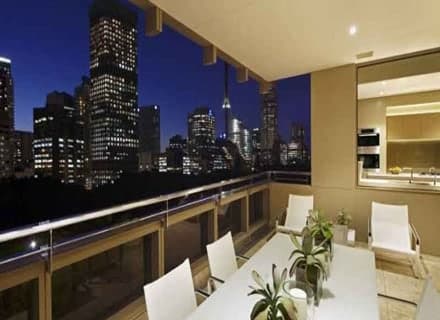Prestige Residential Units & Depreciation Deductions – How do they stack up?

We’ve prepared a number of depreciation schedules on prestige residential units recently and thought to offer some insight into some of the major depreciable components and overall deductions. One particular prestige development was “The Residence” on Hyde Park. The development comprises 87 luxury apartments over 23 levels with unparalleled views of Sydney’s city skyline and harbour. The unique design includes a lobby lounge, lap pool, spa, sauna, steam room, gymnasium, private dining facilities and a wine storage area. The price range was listed at 3.5 to 16 million for a unit within the building, with most of the units being around the lower end of that range. In terms of rental, at the time of our first inspection in early 2013, a handful of residence apartments were offered from around $2,000 per week for a two-bedroom apartment and $3,000-$3,500 a week for a three-bedroom apartment. One of the units we were involved in represented a rental yield of 3.7%. This kind of yield is not particularly attractive given that the median gross rental yield across Australia’s eight capital cities at the time was 4.2% for the quarter ending February 28, 2013, with over 6% yields for houses in Darwin.
But let’s get to the depreciation deductions. Considering one of the units around the 3.5-4m mark, you could expect to see around 1.3m worth of total depreciation deductions over the life of the property, this equates to around 35% of the purchase price, which shows how the “percentage of purchase price” method is a little dodgy. For a brand new unit, this ratio is rather low for prestige units. However, there’s a very good reason for this and it all comes down to non-depreciable items. Investors may be familiar with non-depreciable items such as plants, turf and other soft landscaping as prescribed by the ATO. However, the largest non depreciable part of a purchase price is the land value itself. We’ve had many questions from clients asking why their total depreciation over the life of the property does not equal the purchase price. Certainly older properties with a written down value will result in their total depreciation being lower, but the land value is the number one reason for the majority of the difference. What’s particularly unique to prestige units is that they’re located on parcels of land with a huge land value, and the purchase price includes the market premium that purchasers are willing to pay for the location and especially the view!
Depreciation deductions within prestige units are boosted by high quality finishes. We’ve prepared reports where the plant and equipment items (excluding the common areas) exceed $100,000 in total depreciation. Some assets that are common in prestige units are designer gas fireplaces, automated blinds, heated towel rails and top of the line cooking appliances. Common areas in The Residence included a steam room, sauna, lap pool, and entertaining suite and individual humidity and climate controlled wine storage bays for each unit. In fact, we uncovered 48 different ATO plant and equipment categories within the common property alone.
In summary, whilst the depreciation deductions for prestige units are significant, the ratio of depreciation deductions to purchase price does not compete with units closer to the median prices. However, prestige units are often purchased with the view of occupying the property down the track, or the allure of owning a unique slice of real estate. The investment returns are not always the basis behind the purchase.
